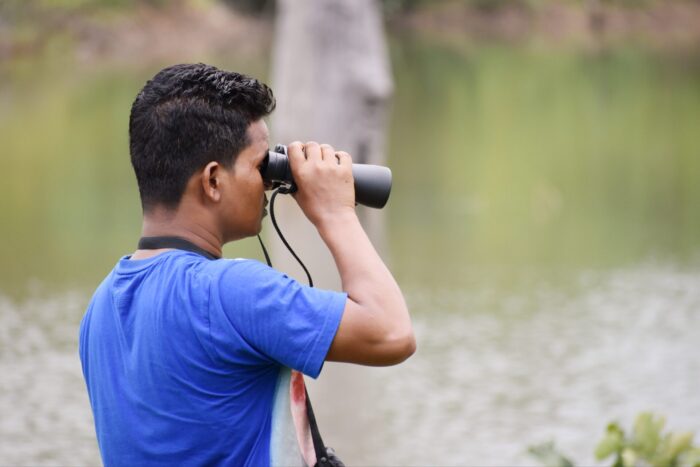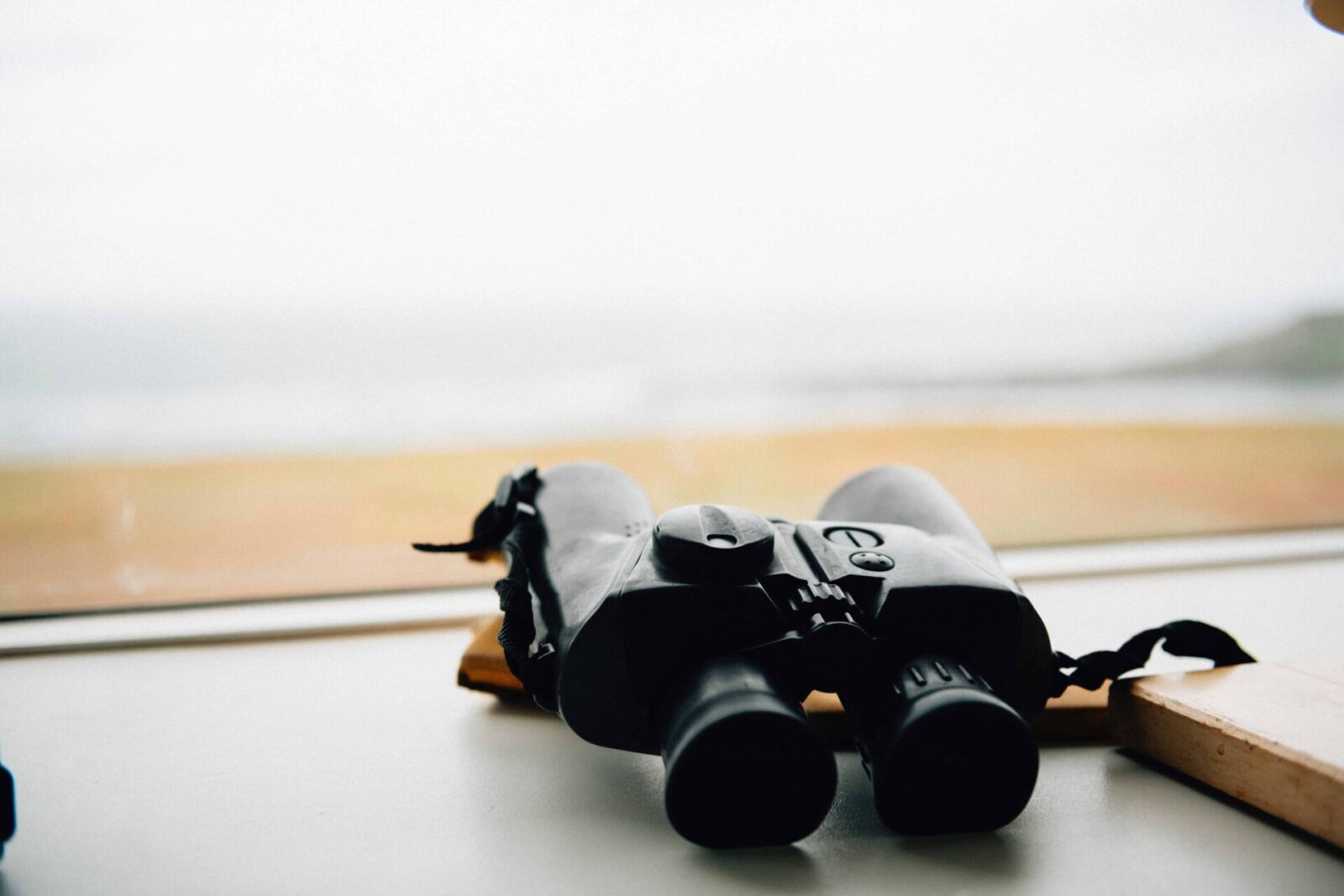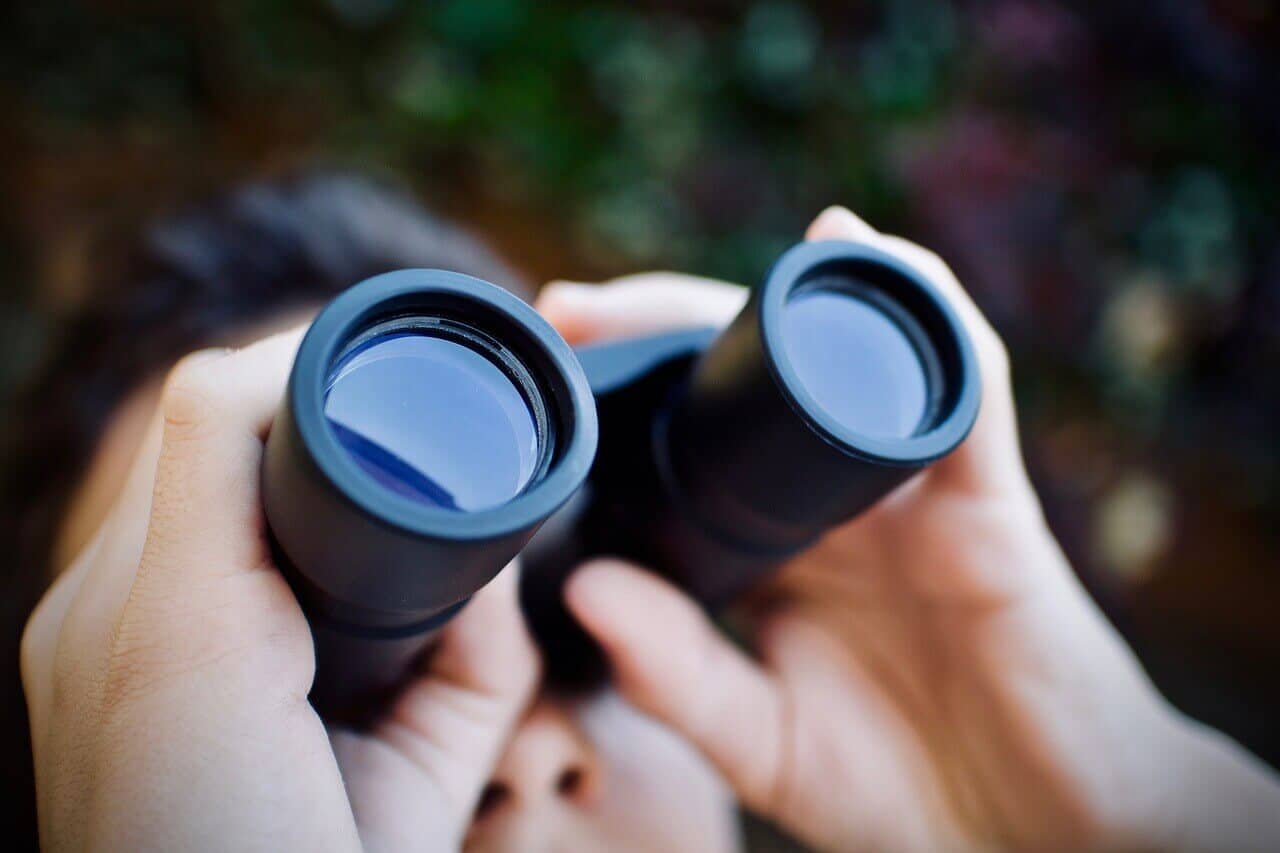Binoculars cleaning basics
The astonishing imagery which our binoculars provide is highly dependent upon lens quality and condition. If you spend a good amount of money on buying binoculars, you must be sure that they are protected from all damage.
Don’t worry if you are wondering and cannot figure out how to clean binoculars inside, outside and from fungus, because by the end of this article, you will be fully equipped with solutions for binoculars cleaning.
Dust, fog, fungus and spores are some of the major culprits which can ruin the quality and reliability of binoculars. Rubbing lenses with a damp or dry cloth will definitely distort the outer coating and the incoming light will scatter. The scattering of light will give false imagery and you will not be able to use those lenses for a long time period.
Therefore, you must pay attention to which method will preserve your binoculars thoroughly.
Don’t know how to clean old binoculars?
Throw away the worries of fungus in your old binoculars and let’s explore a few easy and effective ways of lens cleaning for your old binoculars.
By the end of this article, you will have solutions to all the problems which you have faced while trying to clean/wash your binoculars.
What is the best way to clean binoculars?
The most common practice of cleaning binoculars (whether a new one or an old binocular) is to rub the lens with a piece of wet cloth. But, this damages the lens immensely. First of all, you must make this clear in your mind that water is not a solution for cleaning lenses.
Even a small amount of moisture promotes the growth of fungus. And if the fungus finds its way to your binoculars, you will have to put in the double effort while getting rid of it. Therefore, put this wet solution aside if you want to use your binoculars for a considerable duration.
Read my detailed guides on binocular basics, repairing binoculars at home, and professional binocular repair services with complete details.
5 ways to clean your binoculars
Step #1
Hunting, camping and other outdoor activities result in dust, sand and spores in the lens. If your lenses are filled with dust or any other solid particle, do not worry.
- Start by removing larger particles first. Now keep in mind that blowing dust and sand with your breath is not a wise choice. As our breath has moisture, it will cause some particles/spores to stick to the lens tightly.
- Use a brush, preferably a very soft-haired small brush which you can run through the sides of your binocular lenses. I will recommend Celestron professional lens cleaning brush for this purpose. Relatively cheap and will increase the life of your binoculars manyfold.
- Now here is a thing, if your lenses are occupied with lots of debris then the hand-held brush might not work. You can buy a blower-brush which works like a vibrator.
- Once you turn it on and start running it on the lens surface, it will blow away all the stuck particles instantly.
Step #2
After blowing away large debris, you can do the remaining process with a piece of lens cloth.
Mostly this piece comes within binoculars box. But don’t worry if you don’t have one. The only thing that matters is the softness and hygiene of that cloth.
- You can use your old woolen sweatshirt or pajamas for this purpose. Just cut the cloth into small piece and make sure that there is no moisture or dust in it. Alternatively, we recommend the Koala lens cloth – which we have personally used and can conform their strong cleaning performance.
- UNPARALLELED CRYSTAL-CLEAR PERFORMANCE: The only obsessively engineered, best-in-class microfiber cleaning cloth, meticulously crafted from proprietary, ultra-dense, super-absorbent Japanese woven fabric, effortlessly absorbing the toughest dirt, grime, and oils – leaving your lenses spotless – every time.
- EXPERIENCE THE POWER OF JAPANESE MICROFIBER: Not all microfiber is created equally. Actually, our biggest competitor is our own relentless drive for next-level performance. Koala cloth is engineered from our ultra-fine, super-dense, and totally lint-free Japanese micro fiber cloth, woven in our max performance honeycomb matrix.
- Gently rub the lens surface with that dry piece of cloth and your lens is good to go.
By following these few easy steps you have ensured that the sensitive inner and outer coatings of your lenses are intact.
You may also be interested in knowing about the top American binocular brands and German binocular brands.
How to clean binocular lenses?
Optic lenses are as sensitive as our own eyes and we must protect them with more or less equal care. For example, when dust particles enter your eyes during a storm, what do you do? I am sure you don’t fiercely rub at least, do you?

The same goes for the lenses of binoculars, their surfaces can get destroyed with small, barely visible sand particles and it will result in scattered imagery. To avoid any of these troubles I have compiled a few easy tips which you can imply to avoid distortion of those precious lenses.
Use lens solution
Spraying or washing the lens with lens solution is the easiest way to clean them. But you must be careful in choosing which solution is suitable for your binoculars. Extensive use of chemicals can damage the color coating and imagery will not remain the same.
- The most effective way of using the lens solution is to use compressed spray bottles. Those which are made specifically for small lenses. You can spray the solution on your lens and let it run through your lens.
- If you don’t find a compressed spray bottle, no problem. You can place the lens cloth on the top of an optic glass and pour the solution on it. Once the solution is soaked into the lens cloth, you can gently move that cloth on the lens from one side to another. I would recommend this lens solution that’s specifically developed for lens cleaning.
- One other tip which I would like to share with you is to pick a soft-haired brush and dip it in the lens solution. You can use this tiny brush to blow away the impurities and remove the dust stuck in the sides of the round lens.
All the above-described ways will only be helpful if you have a suitable lens solution. After buying a good solution, use whichever way is easy for you and your lens will be completely safe from all the tiny scratches.
How to clean foggy binoculars?
Water is the main element that can blur your lens and you will find difficulty in seeing through it. If the moisture stays for long in there, a rusting and fungal attack will happen. And both of them are huge troublesome.
If you happen to drop your binoculars in water, it isn’t a huge issue.
- Open the lens and wipe it with a dry but soft piece of cloth.
- Once you wipe it, let it air dry.
- Do not blow or rub the lenses.
It will dry within a minute or two and you can put your lens back in its original place.
- Similarly, if fog makes your binoculars blur you can open them and let them air dry. Wipe it in the same way and you are all set.
Also Read: Best Lens Cleaning Kits in the market
How to clean binoculars from fungus?
The worst situation you can face while cleaning your binoculars is to see fungus inside them. The main cause of fungal growth is moisture and dust. If you leave binoculars unchecked after using them, next time they could be troublesome to use.
Water and dust promote fungus and the fungi start nourishing themselves on the outer layer of lenses. This leads to the destruction of binoculars and the imagery they provide detiorates.
However, no matter how old the fungus is, there is always a way out. Here are a few ways you can use to kill that resistant fungus.
Method 1
Dishwashing soap and vinegar have the ability to completely remove fungus from any surface. Moreover, both of them are easily available. Here are some steps which you should follow during the whole cleaning process.
- Start by disassembling the lenses. The latest binoculars are easy to handle and you can remove lenses by simply rotating the knob.
- But if you are working on an old binocular pair, you will be needing a small tool called ‘lens wrench’.
- Place the wrench on both sides of the lens and start moving it, the lens will be removed easily.
- Now shed light from behind the lens and figure out the amount of fungus.
- Place the lens on a piece of paper and drop the dishwashing liquid on it. Shake it a little bit and the fungal threads will come off.
- Finish the process by pouring white vinegar on the lens. This will remove any left-out impurities.
- Always make sure to wear gloves while working on your lenses because the fingerprints can affect the clear view your binoculars used to provide.
Method 2
If the fungus is getting out of hand i.e. it has occupied the whole lens, the dishwashing liquid will not work. But don’t worry because you can still eradicate that troubling fungus from your binoculars.
- Apply any athlete’s foot cream, which is used to cure the fungal attack on feet.
- Apply it with a brush or with your finger thoroughly on the lenses and leave them overnight.
- This process will completely kill the fungus and it will never grow again.
Also, read my guide on top binoculars for coyote and varmint hunting.
How to take care of your binoculars?
Binoculars are costly and they are an investment we make once in a while. Now that I have discussed all the major ways you can use to clean your binoculars. Here are a few tricks which you can use to avoid those problems in the future.
#1 Lubricate the lenses
The rotating knob of the lens is prone to rust and fungal growth. Excess water can slowly start rusting in the knob and you will have to face problems in opening it. But you can easily avoid this rusting by lubricating the knob.
You can buy lens lubricant from any optics store and apply it to your lenses and knobs for their protection. Colourless and odorless grease is best suited for lenses.
#2 Protect from moisture
Likewise, as I repeatedly said that water is the biggest enemy of optics, so you will have to be cautious in exposing your binoculars to water.
- Even if your binoculars are waterproof, try to avoid water.
- Do not blow on lenses. Our breath contains moisture and bacteria which can ruin the precious outer coating of lenses.
- Place your binoculars in a dry place, preferably in air-tight bags when you don’t need them.
#3 Buy lens essentials
- If you live in a humid region use water-absorbent silica gel for preventing damage. These gel bags are easily available in the market and are the best repellent to protect binoculars.
- Similarly, the lens cleaning solutions can be of great help to you. Buy those which have the least amount of chemicals in them and you can wash and clean your binoculars on your own.
- Small, camel-haired brushes are a must-have if you travel a lot and carry your binoculars to windy places i.e. deserts etc.
- Stuck sand and dust do not come off by wiping and rubbing. Brushes will help you in this respect.
- Cleaning tissues that come within binoculars’ box are of good quality. After their extensive use, you must replace them. Try to buy soft small cleaning clothes. If by any chance you can’t get hands-on cleaning clothes, don’t bother much!
- Cut a small piece from a cotton shirt and use it. Ensure that it is fur-free and clean.
- Latex gloves prevent small bubbles on lenses made due to our fingerprints and provide good results.
Final thoughts
After discussing all methods, pros and cons of how to clean binoculars inside, outside, and from fungus, I am sure that you will find out a suitable cleaning method. I am summing it up here hoping that your binoculars will always be in a perfect state from now on!

An optics enthusiast – I love bird watching as well as wildlife. Originally from South Africa, I moved to the UK at a young age. I love reviewing the latest binoculars as well as traveling. I work as a comms consultant during the day. My plan is to travel across the world so building up to that goal.
Last update on 2024-07-15 at 15:44 / Affiliate links / Images from Amazon Product Advertising API







